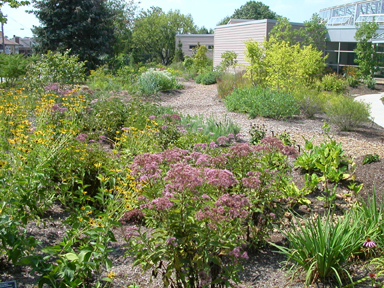
Alvis has been know as the ‘go-to’ supplier for specialty mixes for many years.
Rain gardens, Bioswales, Bioretentions
Rain gardens, Bioswales, and Bioretention basins are all an eco-friendly way to use rain water as a resource rather than a byproduct in your landscaping. They bring beauty to our neighborhoods, reduce the collection of pollutants that are carried to our waterways, and help reduce flooding to our properties.


Coney Island Rain Garden Colerain Park Rain Garden


Cincinnati Zoo Rain Garden
all photos courtesy & property of MCWCC (millcreekwatershed.org)
Bioretention basins are similar to rain gardens in that they are also depressions or basins in a landscaped area. Water collected in a bioretention basin percolates through a system where the water is treated by a number of physical, chemical and biological processes. The slowed, now cleaned water is then allowed to drain into native soils and is then directed through underdrains to a storm sewer or receiving waters. More about bioretentions.
Bioswales are conveyance channels with native vegetation planted along the side slopes and bottom. Bioswales provide a natural alternative to storm sewers, cubs, and gutters. They can help support an existing system, reducing the load during storms. More about Bioswales.
Another option is permeable landscapes, which are porous pavement materials that allow water to percolate rather than run off into storm sewers. More about permeable landscapes.
Suggested Materials: Soil medium: consisting of one or more of the following (in varying ratios) topsoil, sand, gravel, compost, peat moss. Example of a ‘Standard Mix’ is 65% coarse sand/25% compost/10% soil). We can custom blend any bio mix to meet your area’s specification. Our soil

